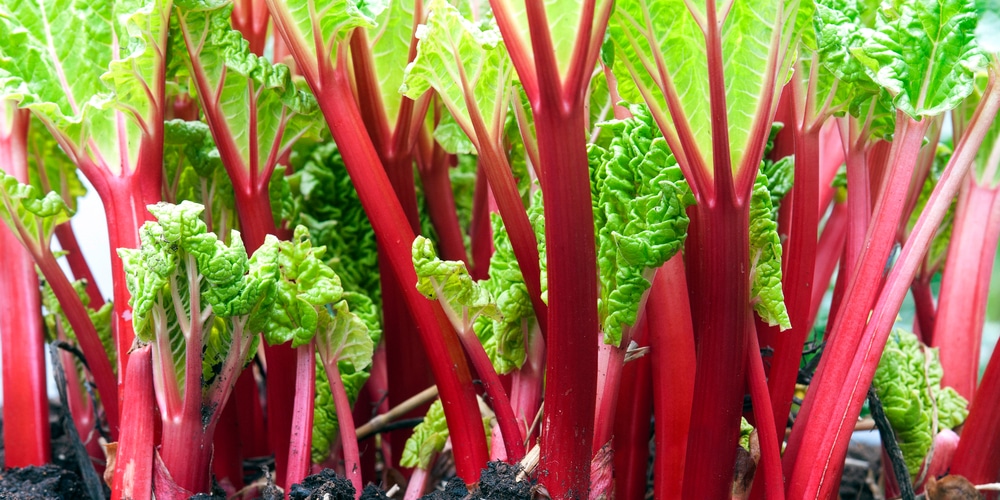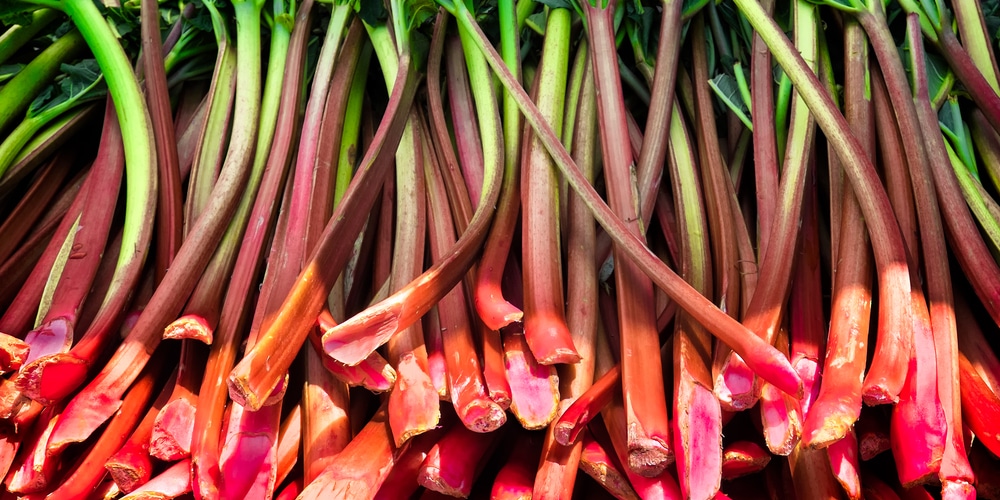Rhubarb plants are as popular now as they were before. They’re a welcome addition to any vegetable garden as they’re relatively easygoing, and produce an abundance of leaves each growing season. The long-lived perennials can also fill up landscape spots with their bright red stems and large foliage.
One of the questions you need to ask when planting rhubarb is, ‘how much sun does rhubarb need?’ Let’s take a look at the plant’s requirements, particularly how much light a rhubarb should get and other things that can make it grow well.
Does Rhubarb Need Full Sun?

Rhubarb is a cool-season plant that likes to bask in the sun. Its perennial and long-lived nature means that you should carefully think about where you will plant rhubarbs in your yard or garden.
Rhubarb grows best where there’s full sun. A minimum of 6 hours of direct sunlight each day should suffice, but if you can give it more, the better.
Rhubarb can grow in USDA zones 3 through 8, but since it’s primarily a cool-season vegetable then you should make adjustments if you live in zones 6 and above. In this case, a partial sun condition where your rhubarb can get shade in the afternoon will work very well. The plant can still get an adequate amount of light due to its large leaves.
Rhubarb sunlight requirements may vary depending on the zone you live in. Those in zones 6 to 3 should choose a site that gets all-day sun, while those in zones 7 or 8 can plant their rhubarb where it gets direct morning sun and shade in the afternoon.
Meet this and you’ll have fulfilled an important aspect of growing rhubarbs.
Where to Plant Rhubarb?
Rhubarb crowns can be planted in spring just after all risk of frost and freezing weather has passed. Pick a location that gets full sun or partial shade, then prepare the soil for the plant.
Rhubarb likes a well-drained and rich soil that has plenty of organic matter. The richer the soil, the better as the plant grows best in these conditions.
Put in plenty of compost, natural fertilizer, and manure with a garden soil mix and combine well. If you’re worried that the site holds too much water or moisture, then consider a raised bed so you won’t have to deal with root rot and a failed crop.
Keep in mind that rhubarb produces an extensive network of roots, and it doesn’t like to be disturbed or moved, so the initial planting site should be its permanent location. You can start preparation as soon as fall comes around- remove the weeds and work in organic material, and incorporate fertilizer if the soil needs it.
You’ll have a greater chance to succeed if you start with rhubarb crowns instead of seeds. Some of the recommended rhubarb varieties for home gardens include ‘Victoria’, ‘Valentine’, ‘Crimson Red’, and ‘Canada Red’.
How to Plant and Grow Rhubarb in Full Sun
Once you’re done preparing the planting site, it’s time to plant your rhubarb crowns.
Dig a hole that’s larger than the rhubarb crown and position it so that the top of the crown peeks out around 2.5 centimeters above the soil line. Fill up the space with medium and gently firm it around the plant.
You can spread a layer of mulch around an inch, but don’t cover the growing tip. Water well and wait for signs that your plant is established.
Regular watering is a requirement for young rhubarb plants. Irrigate once the top inch or two of the soil is dry to the touch and keep a constant eye on the moisture levels. You can add mulch to keep the soil relatively moist and compost around crowns during spring to boost production.
To get the most out of your rhubarb you should leave the stems alone during its first year. Let the plant produce leaves and establish a strong root system, then begin harvesting the stems in the second or third year. Leave around 4 to 5 strong stems each time you harvest per crown and pull only the ones with fully-opened leaves.
Rhubarb can achieve a spread of 4 feet (or 48 inches), and it’s recommended that you remove flower stalks as soon as they appear.
Related article: Can You Grow Rhubarb in Texas?

